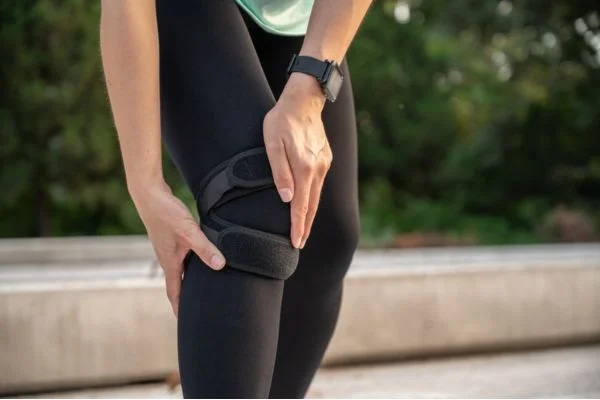Have you been diagnosed with bursitis? And wonder, Should I Wear A Knee Brace For Bursitis? In this blog post, we’ll discuss when and why you should wear a knee brace for bursitis and the benefits of doing so. Read on to learn more!
Wearing a knee brace for bursitis can aid in pain relief and support during daily activities. Consult with a healthcare professional to determine if it’s suitable for your specific condition and to get personalized recommendations.
What is Bursitis?
Bursitis is an inflammation of the fluid-filled sacs (bursae), which cushion the joints between bones and muscles, tendons, and skin. It can cause pain and swell in the affected area.
Common symptoms include tenderness, stiffness, difficulty moving the joint, and swelling or redness around the joint. Bursitis is often caused by prolonged pressure or overuse of a joint—such as lifting heavy weights or playing sports—but can also be caused by an injury or infection.
Should I Wear A Knee Brace For Bursitis?
The answer to this question depends on how severe your bursitis is. If you have mild bursitis that isn’t causing severe pain or restricting your range of motion, you may not need to wear a knee brace.
However, if your bursitis is more severe or your doctor has prescribed it for you, then wearing a knee brace can help reduce pain and stiffness in your knees.
A good knee brace will provide compression, stabilization, and support for your affected area while allowing some flexibility in movement.
Also Read: Should I Wear Knee Braces For Motocross?
When Should I Wear a Knee Brace?

If you have been diagnosed with bursitis in your knee joint, then wearing a knee brace can help to reduce pain and inflammation while allowing greater mobility.
A brace will also support the injured area while you do your daily activities. Your doctor may recommend wearing one all day or during certain activities such as running or playing sports.
Be sure to listen to your doctor’s instructions regarding how often you should wear it and how tight it should be to ensure that it provides adequate support without causing further discomfort.
Wearing a knee brace can also help prevent future injury by providing extra stability to the affected area when performing activities that could lead to bursitis flare-ups.
This can be especially beneficial for those involved in physical activities such as running or basketball, where there is an increased risk of re-injury due to repetitive movement patterns.
Also Read: What Do Motocross Knee Braces Do?
What Are The Benefits of Wearing a Knee Brace?
Wearing a knee brace may seem like a nuisance, but it provides many benefits. First, knee braces act as external support to the joint, working with weakened muscles and ligaments to keep your knee stable.
This protects your knee from further injury and can help you heal faster if you’re already dealing with a problem. Additionally, they can help reduce pain while running or playing sports by reducing friction, resulting in improved performance.
Finally, many braces are designed for comfort and protection tailored to your needs. So you get to enjoy the flexibility and support for hours on end, all while enjoying a snug fit that won’t dig into your skin. All in all, there are many reasons why wearing a knee brace is worth it!
What Kind of Knee Brace Should I Get?
When selecting a knee brace for bursitis, it’s essential to consider several factors, including
1. Comfort level (it should fit snugly but not too tight), whether it offers adjustable compression levels (so you can adjust as needed)
2. Type of material (look for breathable fabrics like nylon/spandex blend), type of closure system (hook-and-loop or buckle straps are usually best)
3. Ease of application (you want something easy to put on and take off).
Additionally, make sure that the brace you choose provides adequate support without limiting mobility too much – if it’s too restrictive, it won’t be beneficial in reducing pain!
Also Read: Are Closed Knee Braces Okay For Tennis Players?
Bottom Line:
Wearing a knee brace can help manage symptoms associated with bursitis in your knee joint while providing added support during physical activity that could otherwise lead to further injury or flare-ups of symptoms.
Working alongside your healthcare provider is critical when deciding if this treatment option is right for you and determining what type of brace would best fit your needs based on activity level and existing discomfort levels.
Don’t hesitate to reach out today if you think wearing a knee brace might help improve your quality of life!



